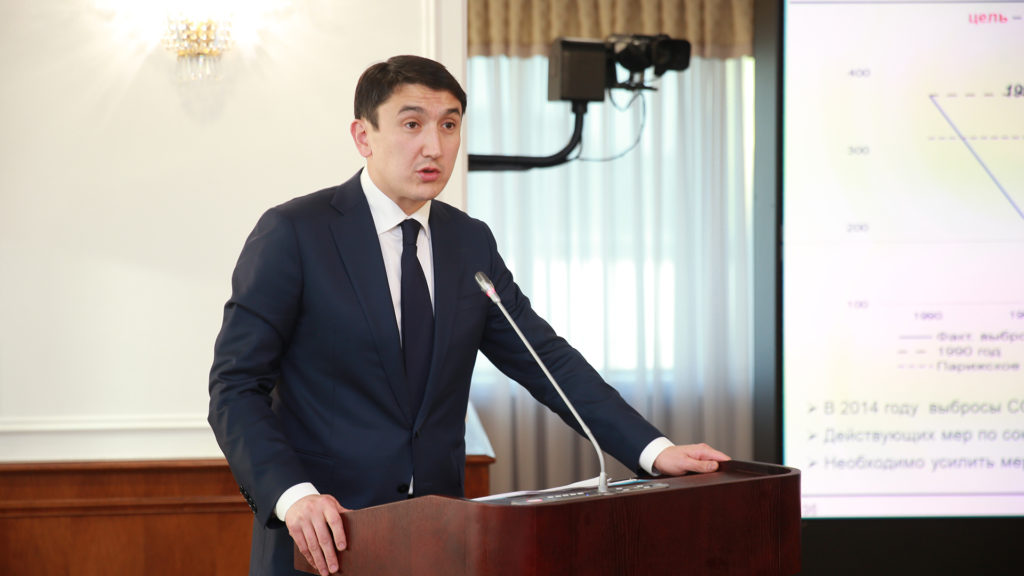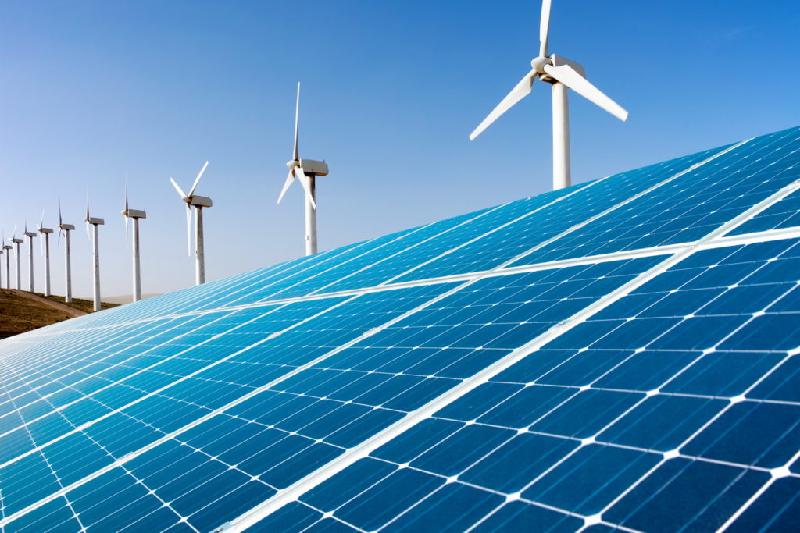NUR-SULTAN – Eighty-seven renewable energy facilities with a capacity of 1,042 megawatts will be operating in Kazakhstan by the end of this year, announced Kazakh Prime Minister Askar Mamin at the Oct. 29 government meeting.
The investment in the facilities was 406 billion tenge (US$1 billion).
The Almaty, Zhambyl and East Kazakhstan Regions lead in the number of renewable energy facilities.
Minister of Ecology, Geology and Natural Resources Magzum Mirzagaliyev said climate change is on the agenda of many countries.
Kazakhstan accepted voluntary commitments to reduce greenhouse gas emissions by 15 percent by 2030 compared to the level in 1990, according to the Paris Agreement.
“The transition from the use of coal to renewable energy sources is one of the instruments for fulfilling these commitments. This leads to a reduction in pollutant emissions and production waste,” he said.
The Ministry of Ecology, Geology and Natural Resources has also started to develop a low-carbon development strategy for Kazakhstan until 2050 to implement renewable energy development plans.
The strategy will provide opportunities and benefits to replace or reduce the use of coal and gas under scenarios of economic and energy development. Local experts in cooperation with foreign ones will conduct an analysis in all sectors of the economy. The work is scheduled to be completed by the end of 2020.
Renewable energy sources are the key aspect of the transition to low-carbon development.
The strategy will contribute to reducing greenhouse gas emissions and help fulfil the conditions of the Paris Agreement by 2030.
It is expected that 2.4 billion kilowatts per hour will be generated by renewable energy sources at the end of 2019. According to forecasts, this prevents the annual emissions of 2.3 million tonnes, 190,000 tonnes of polluting substances into the atmosphere and 500,000 tonnes of ash and slag materials.
“If the share of energy from renewable sources in the total electricity production reaches up to 10 percent by 2030, this will lead to a conditional reduction in greenhouse gas emissions by 15 million tonnes and materials polluting the atmosphere by 1 million tonnes and ash and slag materials by 3.2 million tonnes per year,” said Mirzagaliyev.
The ministry has also developed amendments to the legislation related to the generation placement in electricity networks for everyday life to reduce the energy intensity of the housing and communal services of the country.
Attracting investments in waste management with electricity generation is also of great importance as part of the newly established project office of the government. It is suggested to extend the green tariff (feed-in tariff) rate to the electricity generated from waste disposal plants.
“This measure will significantly reduce the amount of materials buried at landfills. More than 1.5 million tonnes of waste will be disposed annually with the introduction of the green tariff. A landfill with a capacity of 1 million tonnes is five hectares of land or about 10 football fields,” he said.
Deputy Prime Minister Roman Sklyar said the support system for the renewable resource development was developed and target indicators were approved. The international auctions were held online for the implementation of large projects for the second year in a row.
“We will promote the use of renewable energy sources in small-scale generation among households and small and medium-sized businesses. We will develop relevant amendments to the legislation for the further development of renewable energy sources. We will continue our work to increase the share in the total electricity generation in the country,” said Sklyar.
Eighty-three renewable energy facilities with an installed capacity of 936.8 megawatts, including 18 wind, 27 solar, 35 hydroelectric power plants and three bioelectric power plants operate in Kazakhstan.
This year, 15 facilities with a capacity of 405.17 megawatt were launched. It is planned to commission four renewable energy facilities with a capacity of 104.8 megawatts by the end of 2019. It includes a wind power station in the North Kazakhstan Region, two solar power stations in the Kyzylorda Region and a hydroelectric power station in the East Kazakhstan Region.




